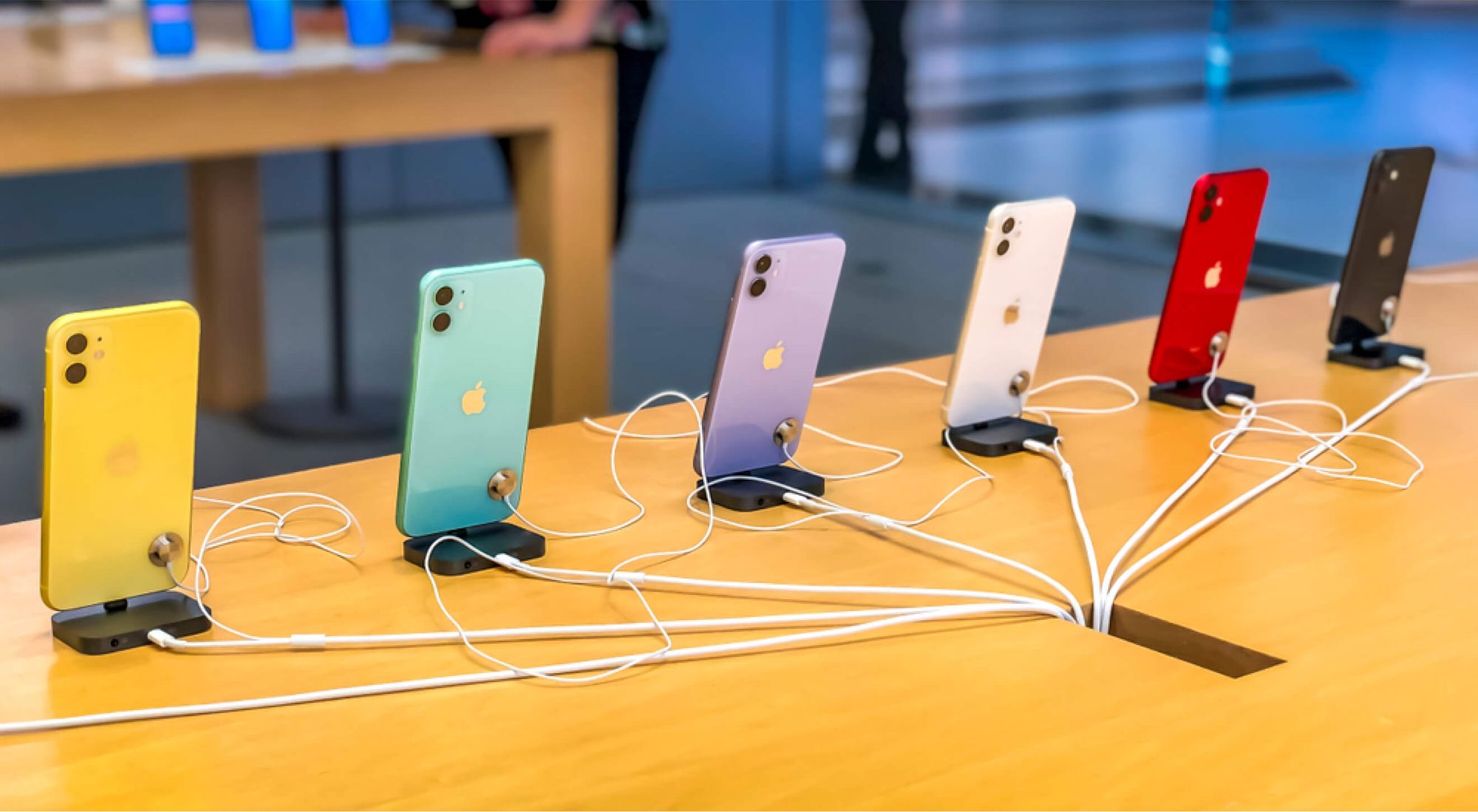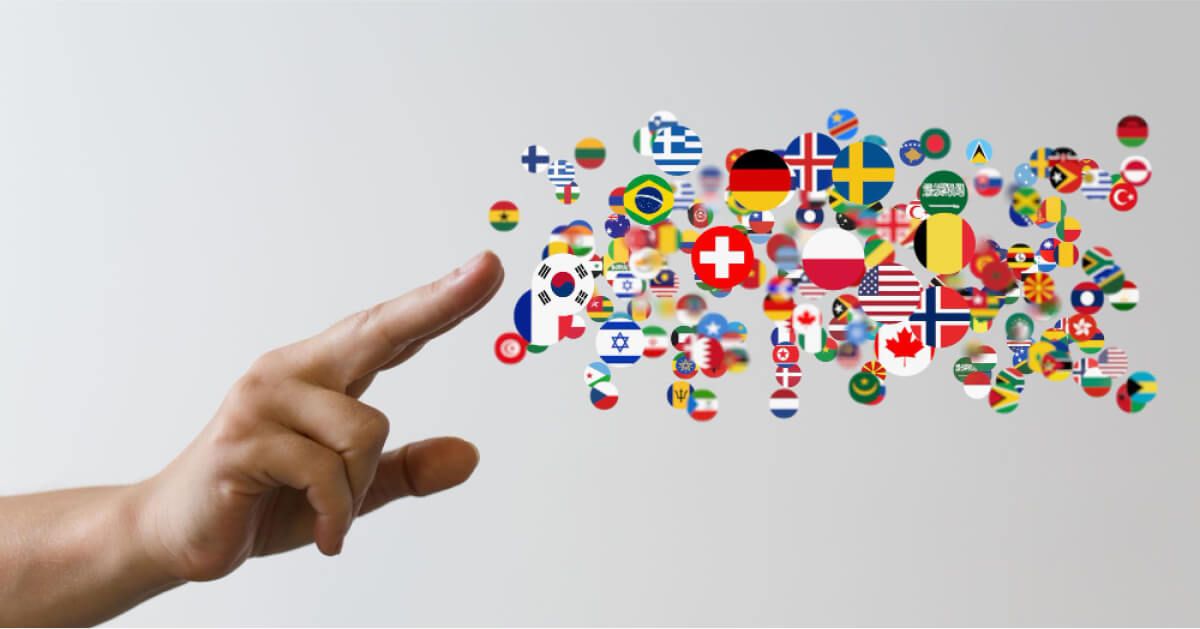Inclusive communication in the workplace: The culture lever HR can’t afford to ignore

Picture a group trying to solve a puzzle together—but half the team can’t see all the pieces, and the other half doesn’t feel heard when they speak up. The result? Frustration, misalignment, and a puzzle that never quite fits.
That’s what happens in workplaces without inclusive communication.
Inclusive communication isn’t just about being “nice” or politically correct. It’s about making sure every voice in the room has a real chance to be heard, understood, and valued. Whether it’s during a team huddle, a company-wide email, or a casual 1:1, how we communicate directly impacts who feels like they belong—and who doesn’t.
In today’s diverse workplaces, clarity without empathy is cold, and empathy without clarity gets lost. HR leaders who prioritize inclusive communication unlock a powerful lever for collaboration, innovation, and culture-building.
What is inclusive communication?

Inclusive communication is the practice of sharing information in ways that respect, acknowledge, and include everyone, regardless of their background, language, ability, or communication style. It’s not just about what you say, but how you say it, who gets to speak, and whether everyone truly has access to the message, both literally and emotionally. In workplaces, inclusive communication means ditching one-size-fits-all messaging.
It’s about using language and formats that reflect the diversity of your team and the strengths of diverse teams. This could look like offering written communication alternatives for spoken content, avoiding jargon, or simply making space for quieter voices. When done right, it bridges gaps caused by culture, neurodiversity, disability, gender identity, or even timezone.
It's more than being polite or politically correct—it’s being intentional about making communication work for everyone, not just the default majority. Think of it as the difference between handing out invitations and actually opening the door.
Inclusive communication lives in the everyday: team meetings, onboarding docs, chat messages, and company updates. It’s the language you choose, the visuals you use, and the channels you open. When companies embed this into how they operate, it creates space for better understanding, collaboration, and psychological safety.
Why is inclusive communication important in the workplace?

Inclusive and diverse communication isn’t just a “nice-to-have” for HR—it’s a core part of how modern workplaces function. When people feel heard and respected, it enhances employee engagement, and they engage more deeply, collaborate, and communicate effectively. Here’s why it matters more than ever:
- Boosts employee engagement: Employees who feel included in communication are more likely to speak up, contribute ideas, and stay connected to their work. When employees feel valued, engagement grows naturally—no cheerleading required.
- Improves team collaboration: Clear, inclusive conversations help teams navigate differences in background, communication styles, and working methods. That understanding builds trust and reduces the friction that slows progress.
- Supports diversity and inclusion efforts: You can’t claim to value diversity in communication if the way you speak excludes people. Inclusive communication turns DEI values from poster statements into daily habits.
- Reduces misunderstandings and conflict: When teams communicate with clarity and cultural awareness, there’s less room for assumptions and misinterpretation. That means fewer “oops” moments and more time spent solving actual problems.
- Increases psychological safety: Inclusive communication helps people feel comfortable sharing concerns, questions, or feedback without fear of embarrassment or retaliation. And safety leads to innovation.
- Enhances your employer brand: Today’s workforce notices how you talk, not just what you say. Companies known for inclusive conversations attract talent that values empathy, respect, and transparency.
Benefits of inclusive communication in the workplace

Inclusive communication doesn’t just prevent problems—it actively fuels progress. When everyone feels considered and included in how messages are shared, the ripple effect shows up across the entire organization. Here are some underrated but powerful benefits you’ll start to notice:
- Faster decision-making: When communication includes all the right voices upfront, there’s less back-and-forth later. Clearer insights from varied perspectives help teams move quickly and confidently.
- Stronger customer communication: Practicing inclusivity internally often translates to better, more thoughtful external communication. Teams become more attuned to diverse customer needs and tone.
- Higher retention of diverse talent: People don’t just want a diverse workplace—they want to feel included. Inclusive communication helps underrepresented groups feel like they belong and are valued.
- Better onboarding experiences: When communication is accessible and inclusive, new hires settle in faster. It reduces confusion and makes the transition smoother, especially for remote or neurodiverse employees.
- More innovation through diverse thinking: A culture of inclusive communication makes space for unconventional ideas. People from different backgrounds feel encouraged to bring fresh, creative solutions to the table.
- Greater accessibility for all roles: From frontline workers to executives, inclusive messaging ensures no one’s left out of important updates. It bridges gaps in roles, locations, and tech familiarity.
- Increased accountability and transparency: Clear, inclusive communication reduces ambiguity. When everyone understands expectations and goals, teams hold themselves—and each other—to higher standards.
Inclusive communication vs. general communication: What’s the difference?

It’s easy to assume all communication is good communication, but that’s far from true. General communication often caters to the majority, while inclusive communication intentionally includes everyone. Let’s break down the key differences between the two:
| Aspect | General communication | Inclusive communication |
|---|---|---|
| Audience awareness | Assumes uniform audience needs without accounting for differences. | Tailors messages to varied backgrounds, styles, and needs across the team. |
| Language use | Often includes jargon, idioms, or culturally biased expressions. | Uses simple, clear, respectful language that everyone can understand. |
| Accessibility | Prioritizes standard formats without inclusive access options. | Offers content in formats accessible to all, including visual and hearing needs. |
| Feedback mechanisms | Feedback is passive or limited to select individuals. | Actively invites diverse feedback and adapts based on input. |
| Representation | Dominated by majority voices, often lacking diversity. | Reflects multiple identities and perspectives in both message and messenger. |
| Assumptions made | Makes unchecked assumptions about roles, gender, or culture. | Avoids bias by asking, listening, and clarifying before speaking. |
| Impact on inclusion | It can unintentionally exclude people from conversations. | Intentionally includes and empowers every individual to contribute freely. |
What does inclusive communication actually look like in practice?

Inclusive communication isn’t just a nice idea—it’s something you can see, hear, and feel in action. It shows up in everyday moments that often go unnoticed but mean a lot to those on the receiving end. Here’s what it looks like in real workplace settings:
- Rephrasing for clarity across roles: Inclusive communicators don’t expect everyone to speak the same “team language.” A developer explaining something to HR won’t toss around acronyms like confetti—they’ll break it down. This shows respect for different knowledge bases and makes room for true understanding.
- Welcoming input from all voices: In a truly inclusive meeting, you won’t only hear from the usual outspoken few. Managers pause and invite thoughts from quieter team members, remote colleagues, or those who may need more time. It turns a meeting from a monologue into a meaningful exchange.
- Accessible formats for communication: Accessibility isn’t a bonus—it’s built in. That means offering transcripts for videos, using readable fonts, and adding alt text to visuals. When every message is easy to access, nobody has to fight just to keep up.
- Mindful written language: Emails and internal messages avoid loaded phrases or gendered terms like “guys” or “manpower.” They’re written with intention: clear, respectful, and bias-free. You can tell when someone wrote it thinking of everyone, not just a few.
- Open, safe feedback culture: Inclusive communication thrives where feedback isn’t feared. Leaders ask for it genuinely, and when they mess up, they welcome correction. This kind of openness makes psychological safety feel real, not just a slide on an onboarding deck.
Essential things to know about inclusive communication
Inclusive communication is more than just a buzzword—it’s the foundation of a truly collaborative and diverse workplace. It’s about making sure every voice is heard and understood, which is the essence of true inclusion regardless of background, identity, or role. Here are the essential things to keep in mind:
- It’s a continuous process: Inclusive communication isn’t a one-time fix; it’s a journey. Teams must constantly assess their communication strategies to ensure inclusivity. It's about creating a culture of listening and evolving based on feedback.
- Language matters: The words we choose can either include or exclude people. From gender-neutral terms to avoiding cultural biases, language shapes how people feel valued. Thoughtful language helps break down barriers and create a welcoming environment.
- Active listening is key: Inclusive communication doesn’t just happen when you speak—it’s most effective when you listen. Active listening, where you give full attention and show understanding, ensures that everyone feels heard and respected, which builds trust across teams.
- Non-verbal cues matter: Inclusive communication isn’t just about words—it’s about body language, tone, and facial expressions. Being mindful of these non-verbal cues ensures that your message is received positively and doesn’t unintentionally exclude or alienate anyone.
- Diversity in perspectives enhances communication: The more diverse your team, the more varied the perspectives. Inclusive communication celebrates these differences. It’s about recognizing how each team member’s background can enrich the conversation and strengthen decision-making.
- Clarity is crucial: Inclusive communication is clear and straightforward. Whether you’re delivering a memo, leading a meeting, or explaining a project, being direct and transparent helps prevent confusion and misinterpretation, particularly when there are language or cultural differences.
- Inclusion requires feedback: An inclusive culture thrives on feedback. When you actively ask for and respond to feedback, you create a cycle of continuous improvement. It shows that you’re open to correction and committed to making communication better for everyone.
How do I promote inclusive communication at work?
Promoting inclusive communication at work is more than just being politically correct—it’s about creating an environment where everyone feels heard and valued. It takes intention, effort, and consistent action. Here are five key ways to make inclusive communication a part of your workplace culture:
1. Provide diversity and inclusion training
Training isn’t just for HR—it should be ongoing and accessible for everyone. Workshops on unconscious bias, inclusive language, and communication styles help employees understand the importance of inclusion. The more knowledge everyone gains, the more inclusive the entire workplace becomes.
2. Encourage open dialogue
Foster an environment where employees feel comfortable sharing their thoughts and experiences. Create forums or casual check-ins where people can voice concerns or share feedback. When open communication is encouraged, employees are more likely to share their ideas and perspectives freely.
3. Use inclusive language in all communications
From emails to presentations, adopting inclusive language helps remove barriers. This means avoiding terms that might exclude or stereotype people. For example, using “they” instead of “he” or “she” or choosing “team” over “guys” makes communication more inclusive for everyone.
4. Ensure accessibility for all team members
Make sure all content and meetings are accessible to everyone, whether that means adding captions to videos or ensuring documents are screen reader-friendly. Providing flexible options for participation, such as remote work or hybrid meetings, can also help employees feel included.
5. Lead by example
As a leader, your actions speak louder than your words. Demonstrate inclusive communication by actively listening, respecting diverse perspectives, and modeling inclusive language in all your interactions. When employees see leaders prioritize inclusion, they are more likely to follow suit.
Tips to make language in the workplace more inclusive

Language is one of the easiest yet most powerful ways to promote inclusivity in the workplace. The words we choose can either build bridges or create barriers, reflecting the need for multiple perspectives. Here are seven simple but effective tips to make your workplace language more inclusive:
- Use gender-neutral terms: Avoid using gender-specific words like “he” or “she” unless necessary. Instead, use “they” or job titles like “manager” or “employee.” This ensures that everyone feels respected, regardless of gender identity, and helps prevent unintentional exclusion.
- Ditch ableist language: Words like “crazy,” “lame,” or “stupid” can unintentionally harm individuals with disabilities. Choose more neutral words like “challenging” or “difficult” when discussing tasks. By being mindful of our language, we can create a more welcoming environment for people with disabilities.
- Focus on person-first language: Instead of referring to someone by their condition or disability, use person-first language. For example, say “person with a disability” instead of “disabled person.” This language emphasizes the person, not the condition, fostering respect and dignity.
- Be mindful of cultural sensitivities: Words or phrases that may seem neutral in one culture might be offensive in another. Be aware of different cultural nuances, especially when communicating globally. Avoid stereotypes and generalizations to respect diverse cultural backgrounds.
- Avoid jargon and buzzwords: Jargon or technical terms can alienate those who aren’t familiar with specific industry language. Opt for clear, straightforward language that everyone can understand, regardless of their role or expertise. This helps ensure that everyone in the room can follow the conversation.
- Use inclusive job descriptions: When writing job descriptions, be mindful of the language used. Avoid words that may unintentionally attract only certain candidates. Use inclusive phrasing like “we’re looking for someone with a passion for...” instead of “we need a rockstar…” to welcome diverse applicants.
- Encourage feedback on language use: It’s important to create a space where employees feel comfortable sharing feedback on language. Encourage staff to politely point out any terms or phrases that may be unintentionally exclusive or offensive. This helps continuously evolve language practices to be more inclusive.
Challenges HR faces when promoting inclusive communication
Promoting inclusive communication is essential for building a healthy, diverse workplace, but it comes with its own set of challenges. HR teams often face obstacles in overcoming ingrained habits and cultural barriers. Here are five common challenges HR professionals encounter when trying to promote inclusivity in communication:
- Resistance to change: Employees may be resistant to adopting new communication styles, especially if they’ve been used to certain ways for years. HR must work to overcome this resistance by offering clear reasons for the change and demonstrating the benefits of more inclusive communication practices.
- Unconscious bias: Even well-meaning employees may have unconscious biases that affect how they communicate with others. Overcoming these biases requires ongoing training, awareness-building, and a commitment to creating a culture where everyone is encouraged to communicate inclusively and consciously.
- Lack of training resources: In many organizations, HR may struggle to find or allocate sufficient resources for comprehensive training. Without the proper resources—whether in the form of workshops, experts, or materials—HR may face challenges in implementing a full-fledged inclusive communication strategy.
- Varying levels of awareness: Not all employees have the same level of awareness or understanding of what inclusive communication means. Some may not see the need for it, while others might be overly cautious, leading to confusion and inconsistency in how inclusive practices are applied across teams.
- Balancing inclusivity with clarity: Inclusive communication often requires a balancing act between ensuring clarity and avoiding exclusionary language. HR professionals may find it challenging to craft messages that are both inclusive and clear without overcomplicating the communication process, especially in fast-paced or high-stakes situations.
How to champion inclusive communication without sounding “corporate”?
Championing inclusive communication in the workplace doesn’t need to feel like a scripted, “corporate” initiative. It’s about making it feel natural, approachable, and authentic to your team. Here are five ways to promote inclusivity without sounding too formal or corporate:
- Be authentic in your messaging: Instead of using buzzwords or corporate jargon, communicate inclusively in your own voice. Authenticity creates a more genuine connection with employees, making it easier for them to understand and embrace inclusive practices. Speak naturally and from the heart to make your message more relatable.
- Involve employees in the conversation: Encourage employees to share their thoughts and experiences on inclusive communication. Rather than dictating how to communicate, open up a dialogue where everyone can contribute. This approach makes the process feel more collaborative and less like a top-down directive.
- Focus on everyday language: Use language that fits your team's day-to-day conversations rather than formal corporate speak. Simple, inclusive language can resonate more deeply with employees, making it easier to build an inclusive culture without sounding overly structured or corporate.
- Create informal channels for discussion: Set up casual, informal spaces where employees can discuss inclusivity, such as team huddles or casual lunch discussions. By making the conversation feel more natural and less formal, employees will feel more comfortable contributing their opinions and ideas.
- Lead with empathy: Empathy should be at the core of your inclusive communication efforts. Show understanding and care for your team’s diverse needs. When you approach inclusive communication from a place of empathy, it naturally resonates without feeling “corporate” or forced.
20 Examples of inclusive communication to follow

Inclusive communication is key to fostering a work environment where everyone feels respected, valued, and heard. It’s more than just being mindful of language—it’s about creating a culture where every person feels included. Here are 20 practical examples to make your communication truly inclusive:
- Active listening: Active listening involves fully concentrating on the speaker, understanding their message, and responding thoughtfully. It shows respect and ensures that everyone’s voice is heard, helping to avoid misunderstandings and promoting more inclusive dialogues.
- Inclusive language: Using inclusive language ensures that no one feels excluded based on their gender, ethnicity, or background. For example, referring to people with neutral terms like “they” or using inclusive job titles helps everyone feel respected and included.
- Avoiding assumptions: Don’t assume that everyone shares the same experiences or viewpoints. Be open to learning about different perspectives and avoid generalizing based on stereotypes, as this ensures more inclusive, meaningful communication.
- Consider your audience: Tailoring your communication to your audience’s needs helps ensure that everyone understands and feels included. Recognizing diversity in communication styles and adjusting accordingly can bridge gaps and promote inclusivity.
- Encourage feedback: Create opportunities for employees to give feedback on communication practices. Regular feedback helps ensure that inclusivity efforts are working and that employees feel heard and respected in the workplace.
- Explore inclusive communication: Make an effort to learn about different communication strategies that promote inclusivity, such as how to foster emotional safety in discussions. This helps employees feel more comfortable sharing their ideas and experiences.
- Make it accessible: Ensure all communication is accessible, whether through providing captioned videos, screen reader-compatible documents, or alternative formats. Accessibility ensures that all employees, regardless of their abilities, can participate equally in the conversation.
- Diverse representation: Incorporating diverse representation in visuals, language, and inclusive leadership roles is essential for fostering inclusivity. Seeing a range of identities and backgrounds in communication promotes a sense of belonging for all employees.
- Language: Be mindful of the language you use, opting for terms that are inclusive and avoid stereotypes. Words can shape perceptions, and using inclusive language helps to create a positive, welcoming environment for all team members.
- Training: Offer training on inclusive communication practices to all employees. Training helps raise awareness about language, behavior, and attitudes, ensuring that inclusivity becomes embedded in the workplace culture.
- Use respectful language: Always use language that acknowledges and respects the dignity of others. This includes avoiding derogatory terms, being sensitive to cultural differences, and ensuring your language is kind, empathetic, and considerate.
- Use visual aids: Incorporate visual aids in meetings or presentations to support verbal communication. Visual aids, such as images, charts, and infographics, can help bridge gaps in understanding, especially for employees with different learning styles or language preferences.
- Verbal and non-verbal communication: Be mindful of both verbal and non-verbal communication, as body language and tone of voice can also impact inclusivity. Open, positive body language, as well as clear and concise speech, helps ensure everyone feels welcome and included.
- Use clear and simple language: Avoid jargon or overly complex language that can alienate team members. Opt for simple, clear language that everyone can understand, ensuring your message is accessible and inclusive to all employees.
- Promote respectful disagreements: Encourage healthy, respectful debate in the workplace. Allowing employees to express different opinions without fear of retaliation fosters an inclusive environment where diverse perspectives are valued.
- Be mindful of silence: Sometimes, silence can speak volumes. When someone is silent in a conversation, it may be due to cultural reasons or discomfort. Being mindful of this silence can help avoid assumptions and make people feel more included in the dialogue.
- Use inclusive meeting practices: Ensure that meetings are structured to give everyone a chance to speak. Using round-robin methods or actively asking quieter members to contribute helps ensure that all voices are heard, promoting inclusivity in team discussions.
- Provide multiple communication channels: Offer various channels for communication to ensure everyone can participate, whether through email, video meetings, chat platforms, or face-to-face. Having options allows people to communicate in the manner they are most comfortable with.
- Recognize and address microaggressions: Be proactive in recognizing and addressing microaggressions—those small, often unintentional slights. By acknowledging and discussing these, you foster a workplace culture where individuals feel safer and more valued.
- Empathetic communication: Approach all conversations with empathy and understanding. Being sensitive to the needs and feelings of others promotes an inclusive environment where people feel supported, leading to healthier communication overall.
The role of inclusive communication in conflict resolution
Inclusive communication plays a pivotal role in conflict resolution by ensuring that all voices are heard and valued. It helps create an environment where employees can express their concerns and resolve disputes in a respectful, constructive manner. Here are five ways inclusive communication is critical to resolving conflicts effectively:
- Encourages open dialogue: Inclusive communication fosters a safe space for individuals to voice their concerns without fear of being ignored. It ensures that all parties in a conflict feel comfortable sharing their perspectives, which is essential for reaching a resolution.
- Reduces misunderstandings: By promoting clear, respectful communication, inclusive practices help eliminate the ambiguity that can lead to misunderstandings. When people use language that acknowledges and respects diverse perspectives, conflicts can be addressed with a better understanding of each side’s concerns.
- Promotes empathy and respect: Inclusive communication emphasizes empathy, allowing individuals to connect with others' feelings and viewpoints. This builds respect among conflicting parties, making it easier to find common ground and resolve issues collaboratively.
- Encourages collaborative problem-solving: Inclusive communication promotes a mindset of working together rather than focusing on individual differences. Facilitating collaborative discussions helps parties find solutions that consider the needs and interests of everyone involved in the conflict.
- Prevents escalation: When inclusive communication is prioritized, conflicts are less likely to escalate into larger issues. By addressing the root causes of misunderstandings early and with respect, employees are more likely to resolve conflicts without damaging relationships.
Inclusive communication in remote and hybrid work environments

Inclusive communication in remote and hybrid work environments is crucial to ensuring that every team member feels connected, valued, and heard. Unlike traditional office settings, remote and hybrid environments can make it difficult to maintain inclusivity due to physical distance, time zone differences, and varying access to technology.
However, with intentional strategies that promote equal opportunities, employers can create an inclusive communication culture that benefits everyone.
First, leveraging technology is essential for bridging the gap between remote and in-office workers. Tools like video conferencing, messaging platforms, and shared project management software help ensure that communication is seamless and everyone has access to the same information.
Offering features like real-time captioning, screen readers, and translation services further promotes inclusivity for employees with different needs.
Also, ensuring equal access to information is vital in hybrid settings. Not everyone has the same opportunities for spontaneous updates or conversations that often happen in physical office spaces. Regularly sharing meeting summaries, important announcements, and updates through accessible channels helps keep all employees informed.
It is all about creating virtual spaces for informal interactions is key. Remote work often lacks the casual, spontaneous conversations that happen in person. Virtual coffee breaks or chat channels allow employees to bond and engage outside of work discussions, fostering a sense of community and inclusion. These efforts help combat the isolation that can sometimes occur in remote or hybrid teams.
How to measure the impact of inclusive communication?
Measuring the impact of inclusive communication is essential to evaluate its effectiveness and identify areas for improvement. By assessing factors such as employee engagement, feedback, and participation, organizations can determine how well inclusive communication practices are being integrated. Here are seven steps to effectively measure its impact:
- Conduct employee surveys: Employee surveys are a great way to gauge how inclusive communication is perceived. By asking questions about information flow and feeling valued, you can measure inclusivity. These surveys provide direct feedback on whether employees feel included in communication.
- Monitor engagement levels: Tracking engagement through meeting participation or team collaboration can highlight the success of inclusive communication. Higher engagement suggests that employees feel heard and included. If engagement is low, it may indicate gaps in communication practices.
- Track retention and turnover rates: By monitoring retention and turnover, you can determine if inclusive communication contributes to a positive work environment. High retention rates may signal that employees appreciate inclusive practices. Conversely, turnover may suggest that communication gaps are affecting employee satisfaction.
- Analyze feedback and sentiment: Gathering feedback from employees helps assess the impact of communication strategies. Positive sentiment indicates effective communication, while negative feedback highlights areas for improvement. Regular feedback analysis helps identify ongoing challenges.
- Evaluate communication channels' accessibility: Assessing how accessible communication platforms are for diverse needs is crucial. Inclusive communication requires that all employees can access and engage with company information. Evaluating accessibility ensures no one is left out.
- Assess diversity in participation: Inclusive communication should ensure a broad range of voices are heard. Tracking participation from employees of various backgrounds can help determine inclusivity levels. If certain groups are excluded, adjustments need to be made.
How does DEI survey software help maintain inclusive communication?

DEI survey software plays a crucial role in maintaining inclusive communication by providing a structured way to collect employee feedback. It allows for a clear understanding of how well an organization is addressing communication needs and where improvements can be made. Here are five ways DEI survey software helps:
- Facilitates anonymous feedback: DEI survey software enables employees to provide honest feedback without fear of reprisal. This anonymous approach encourages participation, ensuring that even sensitive concerns are shared openly. It leads to a better understanding of underlying communication challenges.
- Identifies communication barriers: The software can identify communication barriers, such as language or accessibility issues, that may affect certain groups. By analyzing responses, organizations can pinpoint areas that need adjustment. This helps ensure that all employees have equal access to clear and effective communication.
- Monitors progress over time: Regular DEI surveys track how employees feel about communication within the organization over time. This data allows employers to monitor improvements and pinpoint areas that require additional focus. It provides a clear measure of whether inclusive communication efforts are successful.
- Enhances leadership accountability: DEI surveys help hold leaders accountable for fostering an inclusive communication environment. By sharing survey results with leadership, organizations can ensure that managers are aware of issues that need attention. This drives leadership to prioritize communication improvements.
- Supports data-driven decision-making: With concrete data from DEI surveys, organizations can make informed decisions about communication strategies. This evidence-based approach ensures that efforts are targeted and effective. It reduces guesswork, enabling leaders to address specific communication challenges that impact inclusivity.
Summary
Conclusion
Inclusive communication is not just a buzzword but a fundamental component of building a workplace where all employees feel heard, valued, and engaged. By fostering an environment of openness, understanding, and respect, companies can unlock higher levels of collaboration, creativity, and productivity.
While there are challenges in promoting inclusivity, the benefits far outweigh the effort, leading to a more harmonious and thriving workplace. Measuring the impact of these efforts with tools like DEI survey software ensures ongoing improvement and accountability.
If you're ready to take your workplace communication to the next level, consider partnering with CultureMonkey. Their solutions can help you create a culture of inclusivity that empowers your teams and drives success.
FAQs
1. What’s the best format for an employee review template?
The best format includes sections for goal tracking, competencies, achievements, areas for improvement, and future objectives. Use a mix of rating scales and open-ended questions for balanced insights. Keep the structure simple and consistent across the organization, allowing room for personalized comments. A digital, editable format ensures accessibility, version control, and easy tracking of employee progress over time.
2. Can employee review templates improve engagement and retention?
Yes, employee review templates can improve engagement and retention by creating structured, consistent feedback loops. They help employees understand expectations, recognize accomplishments, and identify development opportunities. When reviews are fair and ongoing, they build trust and motivate growth. Employees who feel seen and guided are more likely to stay committed, reducing turnover and boosting workplace satisfaction and performance overall.
3. What are good questions to ask during an employee review?
Good review questions focus on performance, collaboration, challenges, goals, and development. Examples include: “What achievements are you most proud of?”, “What roadblocks did you face?”, “How can we support your growth?”, and “What are your future goals?”. Open-ended questions encourage reflection and honest discussion, helping managers tailor feedback and coaching to each employee’s needs and aspirations effectively.
4. How do I customize a performance review template for different roles or departments?
Start with a core structure, then adapt sections based on role-specific competencies and responsibilities. Include KPIs relevant to each function, and modify evaluation criteria to match the unique goals of different teams. For example, a sales role may prioritize targets and customer interaction, while a designer’s review may focus on creativity, collaboration, and delivery timelines. Always align with departmental goals.
5. Are self-reviews part of the employee review template process?
Yes, self-reviews are increasingly common and valuable in performance review processes. They empower employees to reflect on their own progress, contributions, and challenges. Including a self-review section fosters ownership, encourages honest self-assessment, and sparks meaningful dialogue with managers; this is one example of how to improve the review process. This two-way format improves transparency and builds trust.



